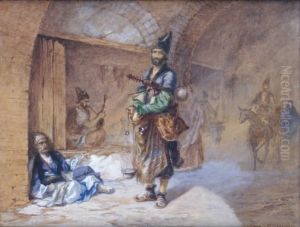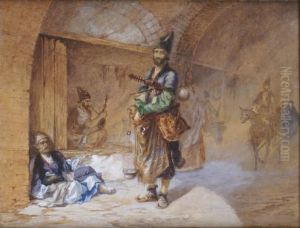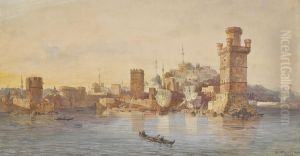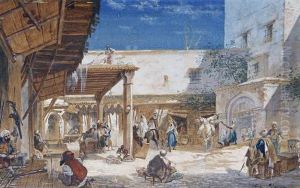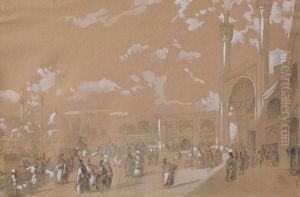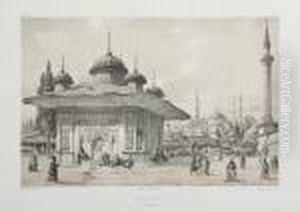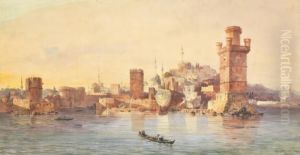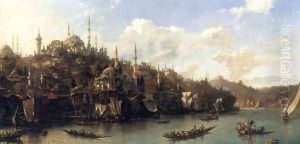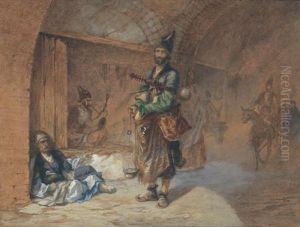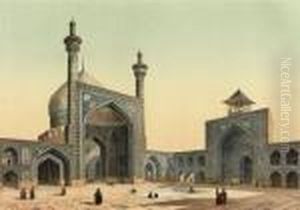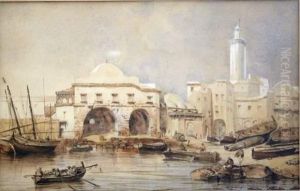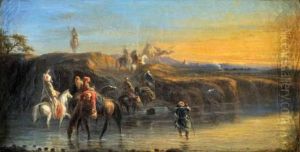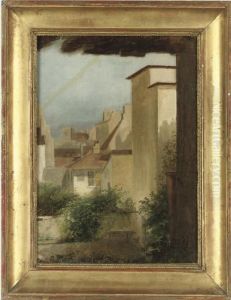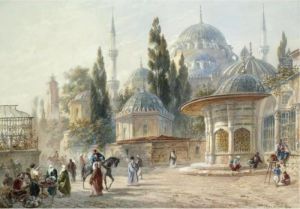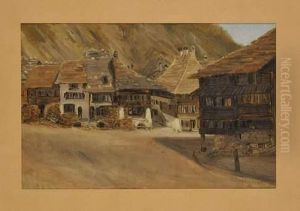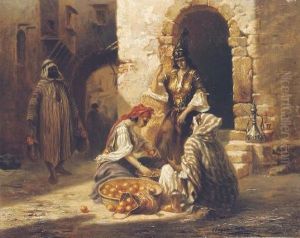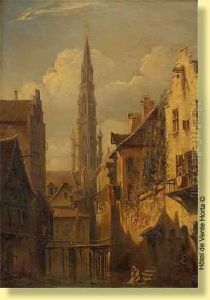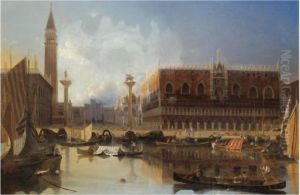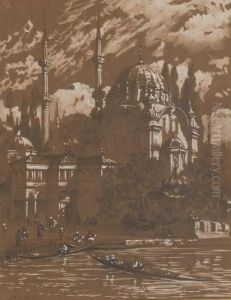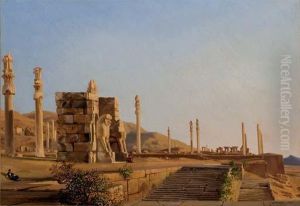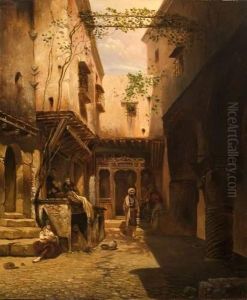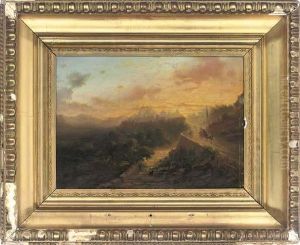Eugene Napoleon Flandin Paintings
Eugène Napoléon Flandin, born Jean Pierre Eugène Flandin in Naples, Italy, on 15 August 1809, was a French painter and explorer known for his detailed illustrations of Persia (modern-day Iran). He studied under the landscape painter Camille Corot during the 1820s in Paris. Flandin initially gained recognition for his work in landscape painting but is most famous for his role in documenting ancient sites in Persia.
Flandin's work took a significant turn when he was selected to join the diplomat and archaeologist Paul-Émile Botta on a mission to the Middle East in 1840. Their task was to excavate the Assyrian capital of Dur-Sharrukin, present-day Khorsabad in Iraq. However, Flandin's most notable work came from his extensive journey through Persia between 1840 and 1841. During this expedition, he meticulously documented numerous historical sites, landscapes, and local customs through his drawings and paintings. These works were later published in the monumental work 'Voyage en Perse' (Travel in Persia), co-authored with Pascal Coste, who joined the mission later.
Flandin's detailed illustrations served as valuable records of Persian monuments and archaeological sites, many of which have since been damaged or destroyed. He was appointed as an official painter for the French Ministry of Foreign Affairs, and his Persian travels gained the interest and patronage of the French government, leading to the publication of his works.
After his return to France, Flandin continued to exhibit his works, including those depicting scenes from his travels, at the Paris Salon. His paintings captured not just the landscapes and historical sites but also the cultural and everyday life of the people he encountered. Flandin was awarded the Légion d'Honneur for his contributions to art and archaeology.
Eugène Napoléon Flandin passed away on 29 September 1889 in Tours, France. His legacy endures through his artistic contributions that provide a historical record of 19th-century Persia, offering insights into the region's past and influencing both art and archaeology.
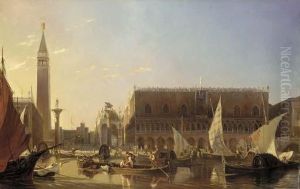
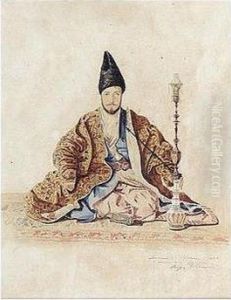
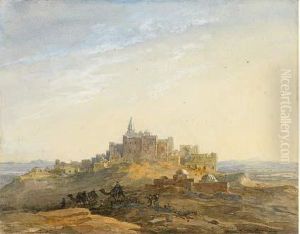
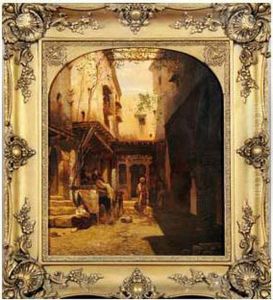
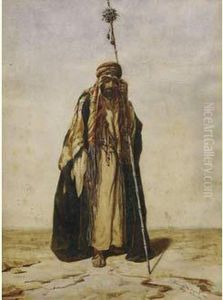
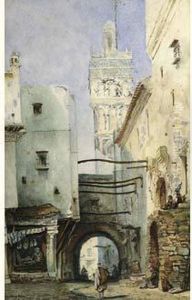
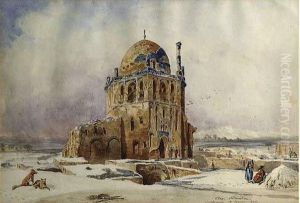
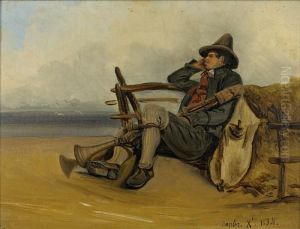
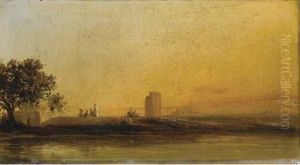
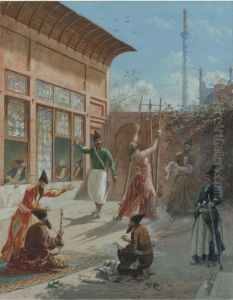
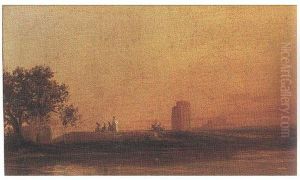
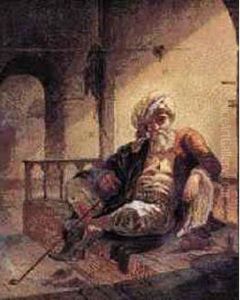
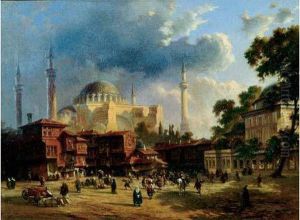
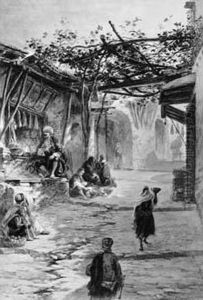
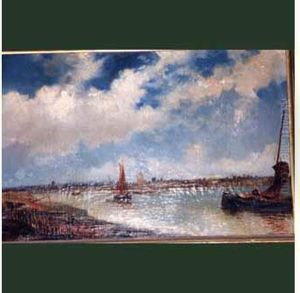
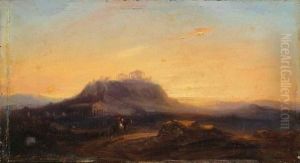

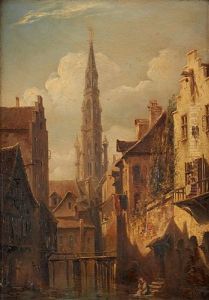
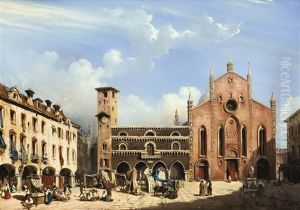
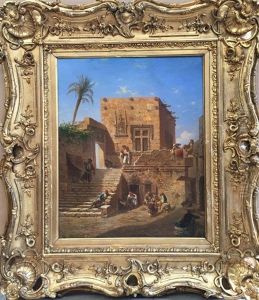
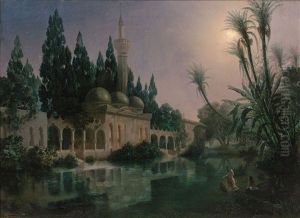
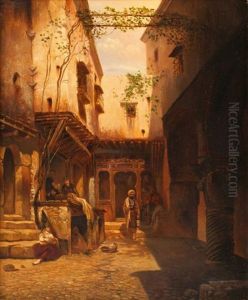
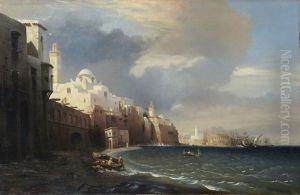
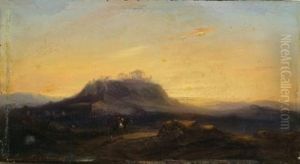
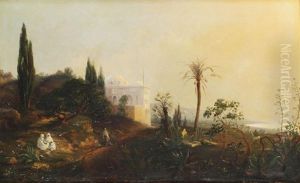
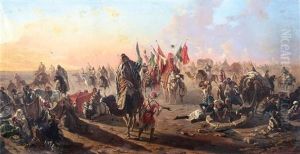
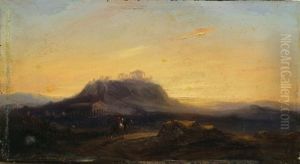
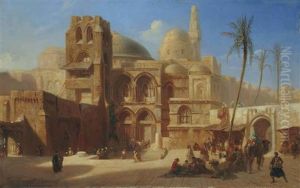
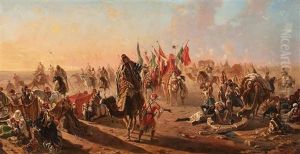
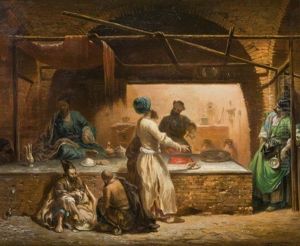
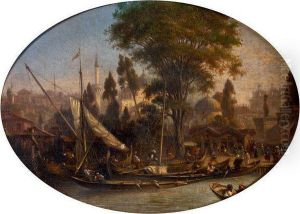
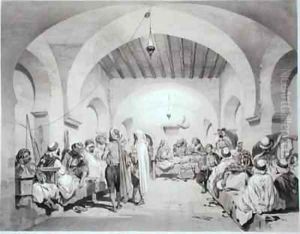
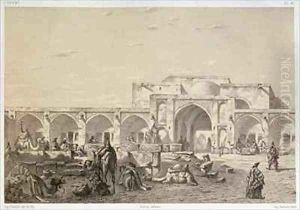
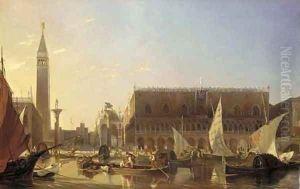
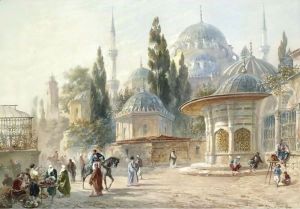
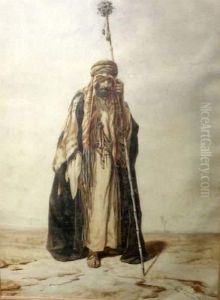
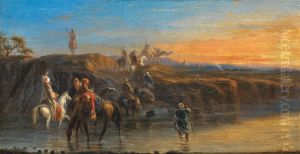
![[l'orient]](https://www.niceartgallery.com/imgs/583826/s/eugene-napoleon-flandin-lorient-1b878eb0.jpg)
